|
Originally published on Sunday, February 24, 2013
Do you remember the time when small one door village parlours that once dotted our rural landscapes? Today the terminology "parlour" is still in use mostly in the countryside, but why the name " PARLOUR"and not village shop? In the following blog Angelo takes us to a journey back in time to the emergence of these tiny make shift one door shops and how they became known as parlours. _______________________________________________________________________ James Cummings, in his seminal work on The Barrack-Yard Dwellers, said, “For the people of the barrack-yards, the sun just had to rise tomorrow.” By this he meant that decades of economic penury in the post-emancipation urban space, leading up to the massive slum clearance exercises of the 1950s, had made the dwellers of the poorer parts of Port-of-Spain masters of coping with poverty. In the areas of Queen Street, Charlotte and Quarry Street where the barrack-yards proliferated, there were occasional wooden cottages owned by more “respectable” coloured people, Venezuelan refugees fleeing political unrest, and white people of reduced means. Many of them would be on the verge of not knowing where tomorrow’s bread would come from. One coping strategy was to open a small “one-door” shop in the front premises of one’s house. This could be in the porch or as a wooden extension. During colonial era a small room inside the main dwelling house was commonly referred to as a parlour. This was a room to entertaim guests, read the daily news , have a smoke or a "spot of tea" Since these makeshift shops often occupied the aforementioned spaces attached to main dwelling structure, the enterprises themselves became known as parlours. Few, if any, Trinidadians are aware that this was how these vital community establishments came to be called thus. The parlour, in urban and rural areas, became a focal point of social interaction where people, young and old, could meet and exchange the latest gossip. Parlours of yore were places where the fare was manufactured almost entirely by local hands and where simple treats meant so much. They were tenuous businesses where tiny profit margins made their proprietorship more a community service than a get-rich-quick enterprise. For children of yesteryear, there could be few pleasanter places. Large glass jars would be filled with sugar-coated paradise plums, kaisa balls, tangy tamarind balls, molasses-dripping toolum, pink sugar cake and paw-paw balls. A huge block of ice, delivered by a cart in the early morning, would be resting on a piece of sacking, swaddled in straw to keep it from melting too quickly. This ice, of course, would be vigorously shaved, rammed into a metal cup and then covered in sweet, red syrup for a penny, and for another copper, laced with condensed milk to result in that much-relished treat, snowball. Outside of the city and in the countryside, there were parlours too, mostly run by “celestials with pig-tails and thick-soled shoes grinning behind cedar counters, among stores of Bryant’s safety matches, Huntley and Palmer’s biscuits, and Allsopp’s pale ale...” this according to Charles Kingsley, writing in 1870 about a Chinese parlour in the deep countryside. The countryside parlour often was the oasis of rural travelers, according to one account from 1914: “Restaurants are rare in the West Indies, except in the principal towns, but it is generally possible to obtain something of a simple kind, which on this occasion consisted of that nice aerated drink called kola, together with buns from a stall at the entrance of the same shop.” Photo 1 is a 1908 photo of a parlour in east Port-of-Spain , where the business model developed. In addition to jars of pickles and sweets, this little wayside emporium also sells a variety of fruit and vegetables. These one door parlours can still be found in many local communities as I discovered on one of my heritage trips to Tobago. ( See photos 2-4 ). (Source: Virtual Museum of Trinidad and Tobago, April 16, 2024)
0 Comments
Who was Mary Bartlett alias Ma "Mayute"? Siparia and La Divina Pastora are synonymous, and the very identity of the little town is associated with the presence of its patron saint. The Elders in Siparia would also remember the name Ma Mayute who was a wealthy parishioner who was custodian of all the wealth of the Siparia Catholic Church. Data from historical records speaks of the powerful influence of Mary Bartlett alias Ma "Mayute", in encouraging the workship of La Divina Pastora by persons of East Indian Descent . In fact Mary Bartlett, alias Ma Mayute, dominated the affairs of Siparia and the local parish for many decades until her death in the 1960s at more than 100 years of age. Her large , ornate home, stood on Mary St. and was constructed in the 1870s. It was demolished in 2000. Photo of Ma Mayute's mansion . (Source: Virtual Museum of Trinidad and Tobago, April 6, 2024) - Author : Angelo Bissessarsingh There are good men and there are great men. Unfortunately, these are often the first to be cast aside, they whose memories and the works with which they benefitted humanity. In his long and prosperous lifetime, Harry Bourne Darling of Lothians Estate near Princes Town did more for the colony than many since. Born in Dublin Ireland around 1813, little is known of Darling’s origins save that by 1840 he was working at Les Efforts Estate, near San Fernando. Darling saved and was able to acquire the extensive Lothians estate near the old Spanish Mission of Savanna Grande, an area known for its pastoral beauty and rolling hills.Following the example of Eccles, Darling opened at his own expense, a school for the Indian children of his estate, breaking with the norm of other estate owners in putting the children to work in the weeding gangs of the estate. This was a full five years or so before the arrival of Rev. John Morton in 1868 and the commencement of the Presbyterian Canadian Mission to the Indians (CMI). Darling, through the Anglican church , sent to India a catechist who could teach and relate to the Indians. The school was described thus in 1864: “Whilst this good work was going on in the North of the Island, in the South Mr. Darling was working in the same direction by the maintenance on his Estate of an Indian School for Coolie Children, to which he has recently added a Catechist from India for the instruction of the adults. Most affecting is it to hear the little Hindoo children, whose ordinary language is still that of their native land, rehearse distinctly their little hymns in English, with verses from the Holy Scripture, or answer simple questions in Bible History, or on Christian truth, or repeat in their own language the Christian Creed and the prayer of our Lord. The Lothians School has 24 schoolars of whom 21 are Hindoo.” Such were the good works of Darling, that he was known as the ‘Squire’ of Savanna Grande, being a man famous for his deep sense of charity, humanity and goodwill. This was the exception rather than the norm among the Naparima sugar planters and really made him a legend in his own time. His home and its grounds were an example of tropic elegance and entertained many a distinguished guest. In 1869, the English writer, Charles Kingsley and his friend, Governor Sir Arthur Gordon visited Savana Grande via the Cipero Tramroad and overnighted with Darling. Kingsley was immediately taken with his gracious host and his magnificent abode and wrote flatteringly of him. In a time when harsh managers, owners and overseers dominated, Darling was a gentleman and father to all. Usually when devastating fires swept the pre-harvest canefields of the Naparimas, the estates which suffered the most were those with brutal management …..labourers would make half-hearted attempts to save the crop or none at all, caring nought if the estate went bankrupt, one master being as bad as another . Not a few of these fires were maliciously set to ruin hard-hearted managers. Darling’s kindness was well repaid when in 1868 forest fires raged on Lothians Estate all hands were on deck in a valiant but futile attempt at saving what the master had taken so long to build. Kingsley recounts the story thus: “And only the summer before all had been well-nigh swept away again. During the great drought the fire had raged about the woods. Estate after estate around had been reduced to ashes. And one day our host's turn came. The fire burst out of the woods at three different points. All worked with a will to stop it by cutting traces. But the wind was wild ; burning masses from the tree-tops were hurled far among the canes, and all was lost. The canes burnt like shavings, exploding with a perpetual crackle at each joint. In a few hours the whole estate, works, Coolie barracks, Negro huts, was black ash ; and the house only, by extreme exertion, saved. But the ground had scarcely cooled when replanting and rebuilding commenced; and now the canes were from ten to twelve feet high, the works nearly ready for the coming croptime, and no sign of the fire was left, save a few leaflesstrees, which we found, on riding up to them, to be charred at the base. And yet men say that the Englishman loses his energy in a tropic climate.” Rebuild they did, and when Kingsley and Governor Gordon sojourned with Darling, they had another touching example of the Squire’s paternal affection which is described as follows: “We had a charming Sunday there, amid charming society, down even to the dogs and cats ; and not the least charming object among many was little Franky, the Coolie butler's child, who ran in and out with the dogs, gay in his little cotton shirt, and melon-shaped cap, and silver bracelets, and climbed on the Squire's knee, and nestled in his bosom, and played with his seals ; and looked up trustingly into our faces with great soft eyes, like a little brown guazu-pita fawn out of the forest. A happy child, and in a happy place” The following day, Kinglsey and Governor Gordon rode into the village and met with the masses. Darling was also a benefactor of the Canadian Mission to the Indians , giving to Rev. John Morton, both lands and money for the establishment of a manse, chapel and school at Savana Grande, which is now known as St. Andrew’s Presbyterian Church. In 1880, Darling hosted royalty, and that of the finest, when the two grandsons of Queen Victoria , Princes Albert and George (later King George V) visited Trinidad as midshipmen aboard the HMS Bacchante. The Princes travelled to Savanna Grande via the Cipero Tramroad, where they were waylaid by the rector of St. Stephen’s Anglican Church, the Rev. J.G Knight, who begged Their Majesties to indulge him and an adoring crowd by planting two small poui trees near the chapel- still to be seen today- , which the Princes were happy to do. The name of the village was changed to Princes Town. They then proceeded to the mud volcanoes of the Devil’s Woodyard on Hindustan Estate, stopping on the return journey to be entertained by ‘Squire’ Darling. Even though a very old man, Harry Darling’s charity and hospitality never dimmed and in 1892, he hosted a wife of a Canadian Presbyterian missionary who wrote: “As kind friends had invited us to visit their Cacao estate near the Montserrat Hills, we returned to Princestown by the Cipero tramway, which took us through eight miles of sugar estates. Rev. Mr. Macrae was on hand to meet us. Thanks to the kind hearted Mr. H. B. Darling, who made a gift to our Mission, of a large part of his beautifully situated property for the "Manse", and the adjoining buildings and grounds. Though an Episcopalian he has ever shown the deepest interest in our Missionaries. We feel very grateful to Mr. Darling and the Doctor for their kindness to us, and we will not forget the many enjoyable drives, in the large comfortable ' Victoria", and the exquisitely arranged flowers he sent in to us during our stay” H.B Darling, full of years and good works, died in 1897 aged 84, being given a long existence which he used to great purpose. A huge crowd gathered at Lothians House where his remains were sorrowfully conveyed to the St. Stephen’s Anglican church , being laid to rest under a simple marble marker. Lothians Estate passed into the holdings of the Colonial Company , the owners of Usine Ste. Madeline and the largest sugar concern in the British Empire. The home which was sanctuary and salon to prince and pauper was demolished in the 1930s. Darling’s gravestone, in the unkempt St. Stephen’s churchyard, fell into dereliction and was lost for decades , before being restored by Clark and Battoo’s Funeral Home in the 1980s in a rare example of public preservation, worthy of the memory of a man who did so much and is now forgotten. The gravestone reads: “IN LOVING MEMORY OF HARRY BOURNE DARLING, FORMERLY OF THE LOTHIANS ESTATE . HE WAS BORN IN DUBLIN AND DIED AT PRINCES TOWN ON 9TH DEC. 1897 AT AN ADVANCED AGE. By grace ye are saved through faith and that not of yourselves , it is the gift of God . Eph. II .8” (Source: Angelo Bissessarsingh Virtual Museum of T&T, Feb 1, 2024) THE STORY OF FELICITA VIDALE , A WOMAN WHO TAMED PART OF THE JUNGLE IN PALO SECO TO CREATE HER OWN GARDEN OF EDEN. Author : Rudolph Bissessarsingh Too often when we drive through the Southland of Trinidad, we still encounter at the sides of rural roads, vast tracts of virgin forests. Hugh patches of bamboo, terite, huge, giant flowering trees and tangled undergrowth of shrubs and vines. We fail to pause for a moment to ponder on the herculean efforts of the early settlers, their tremendous energy and resourcefulness that they expended in the taming of these tropical jungles.
This is the story of one of the unsung heroines of Palo Seco whose name was Felicita Vidale. Felicita made her first journey across the seas by canoe from Tucupita, Venezuela to Trinidad when she was only twelve years old. By that time the spark of adventure had already ignited her restless spirit and the quest for becoming an accomplished business entrepreneur. Felicita was of mixed ethnicity, part Amerindian, part African, part Spanish and other mixed heritage. She was a formidable woman to behold. Strong, tall, domineering, witty and with a keen sense of observation she would brave the perilous ocean many times back and forth from Tucupita to Trinidad, lured on by the prospectus of profitable trade. She was the proverbial tinker, selling each and everything from donkeys, shotguns, cows and even whiskey. Her covert trade involved coming ashore at Palo Seco with her goods and traversing forested trails through the Vidale Cocoa estate to escape the scrutiny of the police. From this base she would then quietly travel by donkey to San Fernando to purchase with the money she had traded her good for white cotton shirts and khaki pants to sell back on the mainland of Venezuela. The estate owner Clement Vidale often admired the beauty of Felicita. His enchantment soon led to love and Felicita and Clement got married at the Erin Roman Catholic Church. Theirs was a marriage that lasted well over fifty years and together they had five children. Her nuptial home was a humble tapia hut with a clay floor and a thatched roof. In the corner of their dwelling abode was a hole in the floor where she made coals to sell to the villagers. Soon the estate became known as Ma Clem Estate in Palo Seco. Cocoa, coffee, fonka bean trees, bananas, yam, cassava, citrus trees flourished in the rich virgin soil as slowly the jungle began to recede replaced by her husbandry. The village folks claimed that her spirit walked unseen through the Estate and this deterred unwanted predators from stealing the produce of the land. The Cocoa Estate became a hub of activity and an economic salve for many of the villagers. Felicita soon earned the respect and love of the villagers in the Palo Seco area. With knowledge gained from her childhood days she soon became the village mid wife, delivering hundreds of babies. In recounting her story , her grand son-in law revealed that on a visit on one occasion to visit his wife ( Felicita’s grand –daughter) who was expecting her first son , Felicita overheard a conversation that the patient next door would have to undergo a caesarean section because her baby was breached. He said Felicita without asking permission from anyone quietly when to the woman’s bedside, pulled the drapes around the bed and began rubbing the woman’s stomach so that the unborn child would turn in the direction so that the woman could have a normal birth. Afterwards she told the nurse at the station that the baby had turned so the woman could now have a normal delivery. Her knowledge of herbal medicines acquired from the mainland soon spread through the village and many came seeking relief of their medical ailments. Her religious dogma was formed in the cauldron of the Waraho Amerindian Tribe. At the heart of her religious belief system was a consciousness that Mother Earth was an eternally fruitful source of everything. The source of all life and nature too, the rivers, the birds the animals. She never made any decisions in life without being guided by her inner spirit. First thing each morning she recited this mantra “PAPA GOD YOU OPEN MEH EYES THIS MORNING “. There are many more stories waiting to be told about this woman everyone called “Ma Clem”. Felicita lived a long , healthy life and was one hundred and twelve (112) years old when she died . The Cocoa Estate of 29 acres is now lovingly preserved as a heritage site in her honour by her Grand-daughter Elizabeth Mohammed and her husband Imtiaz Ali. They are now the custodians left to carry out the legacy of Ma Clem, who had a vision of creating her own bit of paradise in the midst of an untamed tropical jungle . A woman who driven by sheer determination and hard work lived to see her dream come true her own Garden of Eden planted with exotic fruit trees, flowering plants and a productive cocoa estate. More importantly Ma Clem was able to carve out indelible memories in the minds of all who knew her. WE SALUTE YOU FELICITA VIDALE. A LIFE WELL LIVED. (Source: Vitrual Museum of Trinidad and Tobago, March 2, 2024) Thank you to Trinidad and Tobago Newsday for this feature as we celebrate International Women's Day!
From the blog of Patricia Bissessarsingh Feb 22 2024.
Women's History Month is the perfect time to reflect on some of our lesser-known heroines out there. Women who are not household names , but women everyone should know about because of their incredible contributions in different field of endeavours. Today’s blog shines the spotlight of attention on; The first Woman Lawyer to be admitted to the Bar in Trinidad Did you know that women were not allowed to practice in the Courts of Trinidad and Tobago until well over a hundred years after our first Civil High Courts were established in 1822? In 1939, Mona Marjorie Rigsby became the first Trinidad and Tobago-born female attorney-at-law to be admitted to practise in the local Courts and the youngest barrister across the British Empire. Ms. Rigsby was born in Port of Spain in 1918 and in 1935, she wrote and passed the entrance examination for London University. She then attended Middle Hall, where she secured honours in the fields of Roman Law and Criminal Law and Procedure. She was called to the Bar in England in June 1939 at the age of twenty-one. At that time, upon her call, she was the youngest barrister, male or female, across the entire British Empire. Ms. Rigsby returned to Trinidad and Tobago and was admitted to practice in the local Courts in September 1939. Mona Marjorie Rigsby and other women barrister like her not only paved the way for women in enter the male dominated legal fraternity but they also deserve our respect, admiration and remembrance. TRIVIA QUESTION Who was the First female judge in Trinidad and Tobago ? Credit to the following sources : · Mona Marjorie Rigsby: Photo courtesy of the Trinidad & Tobago Guardian published on September 6, 1939, which is part of the National Archives of Trinidad and Tobago Newspaper https://www.facebook.com/nationalarchivestt/photos · https://civilwatch.wordpress.com/2021/08/02/who-were-the-first-women-to-practise-in-the-courts-of-trinidad TT Culture and the Arts e-book cover. AN e-book version has been created for the book Celebrating Trinidad and Tobago's Culture and Arts, making it freely accessible globally.
Author Nasser Khan expressed his gratitude to Minister of Tourism Randall Mitchell and his staff for backing the initiative. Described as the Students Companion of TT Culture and the Arts, over 600 educational institutions received approximately 2,000 hard copies of the 336-page book back in 2019. Researched and written by Khan, his 30th publication inclusive of the e-book, the book contains 33 chapters on topics including Carnival, literary arts, religious festivals, culinary arts and music. There is a special chapter entitled Uniquely Tobago, a media release said. Khan had lamented back in 2019, "Currently in the schools of TT there is no one reference book specific to the broad spectrum of our culture and the arts. Students and teachers must therefore use a variety of resources for assignments…I wanted this book to be a one-stop shop to reduce the amount of time it takes for people to consult multiple sources on the history and culture of TT, depending on the scope of their research.” Then minister of culture Nyan Gadsby-Dolly said, "The very title of this book, Celebrating TT's Culture and Arts, speaks to the importance of what this book brings to our young people." She said it is important for people to recognise the country's rich culture and develop a greater sense of patriotism. The book covers all of TT's cultural and artistic forms of expressions, with illustrations. The online link is: https://archive.org/details/cultureandthearts.com THE STORY OF A LOCAL HISTORIAN WHO NOT ONLY USED WORDS BUT HAND EMBROIDERED CREATIONS TO DOCUMENT HISTORY OF HER FAMILY’S ISLAND RESORT. Blog by Patricia Bissessar
At the Angelo Heritage House in Belmont , in the room designated the Sewing Room adorning one of the walls are two antique linen cross stitch samplers from Barbados, embroidered by sisters Hannah and Barbara Monteith in 1804. Aside from being unique to the region (cloth does not survive well in tropical weather) they are poignant and simple in their execution and showcase the needle work skills of these two sisters that time has long forgotten. For as long as women have been sewing, they've been using embroidery to tell their own stories. History lives on in their stories. This blog ‘A Stitch in Time” is a story of one of our local historians and author of the book Voices in the Street, Olga Mavrogordato née Boos who used embroidery stitches and techniques to create family heirlooms that captured memories pertaining to distinguished guests who spent time at the Boos family resort on Huevos Island. For those unfamiliar with Trinidad , Huevos is the second island out from Trinidad’s mainland in the Bocas Islands of the Dragon’s Mouth, which protects the Northern end of the Bay of Paria. It lies west of Monos, and east of Chacachacare. Huevos island is owned by the Boos family where once upon a time was visited by royalties and other distinguished guests seeking a holiday escape to a private paradise island in the Caribbean Our story is about a member of the Boos family, OlgaJohanna Mavrogordato née Boos who was born in Trinidad. OlgaMavrogordato née Boos, was one of the remarkable archivists and historians of Trinidadand Tobago. She described herself “as a creole born in the early 1900s” and claimed that her family’s oral tradition, a sort of collective memory, of most of the nineteenth century served as an inspiration to ignite the spark and passion in her for learning more about and documenting our local history “Long ago“,according to Geoffrey Mac Lean had this to say when asked what ignited her passion and interest in our local history “ “our parents told us stories of the past, either about our family or the places they knew and the things they did when they were young …… there was time then to sit around and listen, but the pace of life has changed and today our young people, caught up in a jet age, with the vital present and bright future, have no time to look back at the past, or even to wonder about it.” Mavrogordato accumulated in her lifetime accumulated an extensive collection of historical documents, photographs and rare books, wrote numerous historical papers, but what many people do not know about her was that she was a skilled embroiderer who enjoyed using thread and needles to create works of art using linen fabric as her canvas as much as she did writing and documenting our local history. She used her needle craft skills to create not only artistic work of art but heirloom pieces that would one day serve as a reminder of Huevos island’s glamorous and exciting history. De Verteuil C.S .Sp ( 2002) in his book Western isles of Trinidad mentioned that Olga’s passion for needle craft began in her younger days when she would use cross stitch and embroidery to create beautiful messages enhanced with embroidery scenes . These works of art, using needle and thread as her artistic tools were then framed and hung in the living room of the Boos’ family. De Vermeil also makes mention of the fact that when Olga served as hostess to the Boos’ Family Resort on Nuevo’s Island invited guests who spent time at the resort when leaving would be invited to sign their autographs on a hand embroidered linen table cloth Olga had made which featured an embroidered map of the island of Huevos. Olga , however , being the historian that she was , when her guests left would erase the signatures of those guests she deemed “ camp followers” , keeping only those of the more distinguished guests which she immortalized on her table cloth using the art of cross stitching. Some of these guests included: The Duke and Duchess of Kent (1935), Sir Anthony Eden (British Prime Minister 1955-57) (1959), Princess Margaret and Lord Hailes (to inaugurate the Federation of the W.I. in 1958), Princess Royal (1960), Princess Margaret and her husband on their honey-moon (1960) and Lord Mountbatten of Burma (1965). According to De Verteuil ( 2002) , when this hand embroidered tablecloth was filled with the signatures of these VIP guests , Olga began work on a new linen tablecloth which featured embroidered maps of Chacacharare , Monos as well as Huevos. As with the first , the second tablecloth was soon filled with signatures of distinguished guests at Huevos and was designed to serve as a means of preserving history of the lavish hospitality of the Boos family at their island Paradise. Olga Mavrogordato was indeed remarkablewoman . Her artistic creations not only explored the interplay between map images and text, without privileging one over the other but her hand-embroidered pieces told a story with each stitch that was created of Huevos Island’s glamorous and exciting past. If telling stories is what makes us Human, maybe the time has come for today’s youths to find innovative ways of telling a new story, one stitch at a time .As Betsy Greers, founder of Craftivists (2003) wrote : “We are the makers of our own future. We are the crafters of calmer minds. Our stitches are strength. And hope. And love. For strangers, for loved ones, and most importantly, for ourselves. Because without crafting our best selves, we are less use to others.” Credit to the following sources Western Isles of Trinidad ,De Verteuil, Anthony .Published by Paria Publishing Company Ltd., 2011 Geoffrey Mac Lean citizensforconservationtt.org: Olga Mavrogordato’s Voices in the Street. 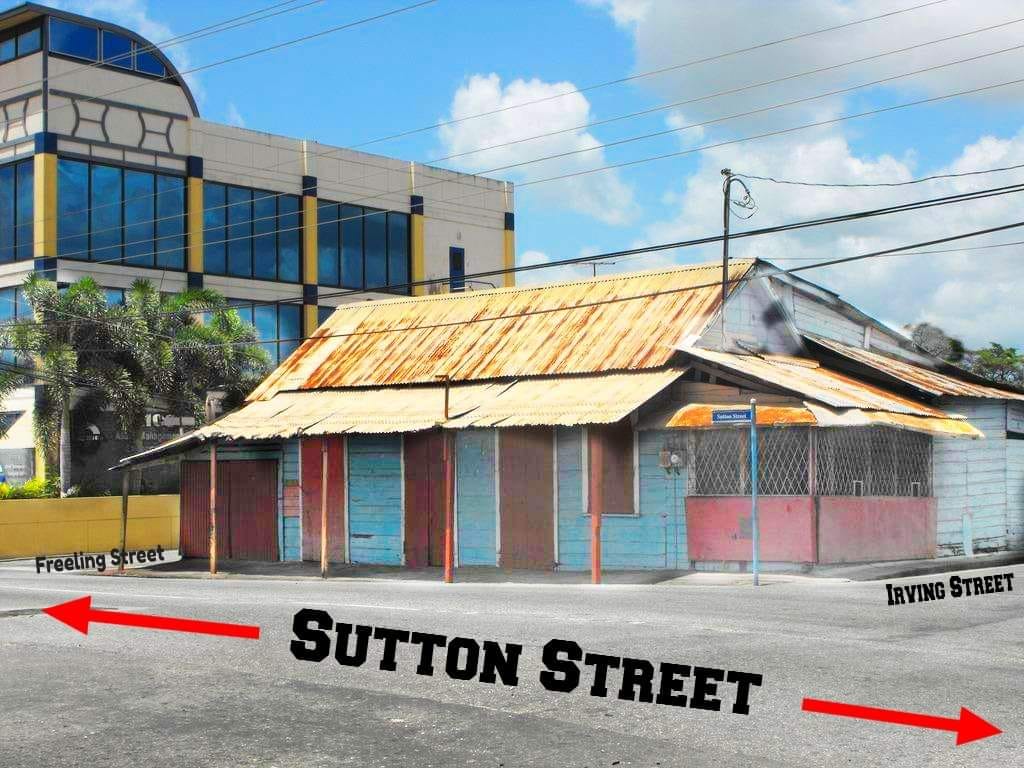 Due credit to Dhaneshar Maharaj who is author of the following blog TRIP DOWN MEMORY LANE LANDMARK IN SAN FERNANDO. ALLOY SHOP The photo depicts a site on SUTTON STREET, with FREELING STREET to the east (left) and IRVING STREET to the west (right). The building seen in the “THEN” photo was what we called “ALLOY SHOP”, a business operated by a Chinese proprietor from the 1940s to the early 1970s. Grocery items were sold on the left side while the right side had a parlour where you could buy something to eat and drink and there was even a small wooden table to sit at by the window and look outside at the occasional vehicle passing or admire the greenery in Irving Park, looking northwards. My favourite meal bought at Alloy’s shop was a six cents loaf filled with butter and cheese (oily and a bit rancid at times) and a Nestlé chocolate milk in a glass returnable bottle, to wash down the bread and cheese. When funds were a little scarce, I would settle for a plain bun or coconut drops and a banana SOLO. Food items were kept in a glass case on top of which sat a cat or two and these would have to be chased away from the glass case when Alloy’s wife was making a sandwich or selling drops, buns, biscuit cake or bellyful cake. The cats were probably kept in order to keep away the mice which roamed the shop and parlour in the night and nested amidst the many spaces and holes in the old, warped wooden floor of the shop. This was the closest shop to where we lived and I remember being sent very often when my mother was cooking, to buy a pack of curry (a penny a pack) or a pound of salt (cent a pound) and probably buying a cent Paradise Plum (three for a cent) or a ‘sours’ with part of the change. It would take me just about thirty seconds to run uphill from my house to Alloy shop to get these items. Children never walked in those days when going on errands. We would run at top speed since we had no shoes or slippers to wear at home and would try to minimize the time the soles of our feet came into contact with the hot asphalt as we went barefooted about our errands. We would fall occasionally when running and grate away parts of the skin on our arms and legs, but we were healthy kids and these bruises and scrapes soon healed without the aid of medication, not even leaving scars on our skins. When Alloy died, his family ran the business for a while but then it was sold to an East Indian man who had a blue Opel motor car and who operated a garage in the back. This new owner kept the place enclosed day and night so no one was able to see inside the premises, except when he was reversing his car out of the garage on to Irving Street and would open the galvanize gate to do so. Once I saw a woman sitting in a hammock, while the gates were open, and I would hear the occasional crying of little children coming from the enclosed premises as I passed by. Little or no renovation was done to this building for the many years in which this garage man lived here. The right side of the photo shows how the spot looks now. The photo was taken early on the morning of January 19, 2014. After the old wooden building was demolished, the spot stood vacant for some time. There was a short mango tree on the compound and grasses and weeds occupied the ground area. I am not sure, but I heard that the owner of Affan’s Bakery bought this spot along with the spot opposite on which the old TICFA building where WASA’s office was once located, and which has since been demolished. The mango tree has been cut down and the area fenced around some time last year and the ground paved over with oil sand. A doubles vendor now operates here out of a new truck, the tray of which has been modified to provide a mini kitchen for cooking bara, aloo pies, saheena and pholourie on the spot. (Just a passing observation. I have seen many doubles vendors with several vehicles, all of them fairly new and not of the cheap run of the mill type. Which tends to signify that a well-run doubles business can move one fairly high up the economic ladder). This doubles vendor sells from Tuesday to Sunday, taking a rest on Mondays. The business was run by a father-daughter combination, the father doing the bagging and money collection while the daughter was part of a team of cooks preparing the items for sale. I have not seen the father in recent times and the daughter has now taken over the father’s former role of bagging and cashing, though today, when I took this photo, there was a strange gentleman cashing and bagging stuff for customers. I first discovered this doubles team on a vacant car park lot opposite the SSL main building lower down on Sutton Street, i.e., at Gomez Street corner. They operated here for a long while until CHRIS BHAGWAT, the owner of SSL did some improvement on the empty lot and began to use it as a car park for his business and to store lots of iron and pipe stuff. Chris himself would patronize this vendor on a regular basis, especially on Sundays and despite his regular diet of oil, flour and other starchy stuff has remained quite lean, not an ounce of fat showing on his slender frame. This doubles business changed location to the pavement of the old, abandoned TICFA building (part of which is seen in the “THEN” photo) next to Affan’s Bakery, just opposite to where they are located today. I taught the owner of Affan’s Bakery (he is the son-in-law of the original founder and owner of Affan’s Bakery, so he is not an Affan, but is married to Affan’s daughter) while I was a young teacher at Naparima College, and I taught his son when I was a much older teacher at Presentation College. I would meet this bakery owner (forgot his name now) on Sunday mornings patronizing this doubles vendor who operated right next to his bakery. I discovered on one such Sunday, that he would buy a Sunday breakfast of doubles for his entire staff of Bakery workers and himself, probably giving this vendor the biggest sale for the day. During the spate of kidnappings plaguing the country about ten years ago, the bakery owner feared for his family’s safety and took his children out of school and along with his wife, sent them to live in Vancouver, Canada, where they now reside. After the old TICFA building was demolished last year the doubles vendor moved over the road to the former Alloy Shop site and has remained there to the present time. Items worth noting in this picture are the wrapper and money collector having to stand on a bench to be at a high enough level to function properly, a green plastic chair for lazy customers to sit on and eat in the shade cast by the truck, two coolers for supplying drinks to patrons eating on the spot, a garbage bin for the exceptional customer who knows how to use it or just feels like not littering on certain occasions, a water container some distance away to the east for washing hands, a fat customer wearing a number 8 jersey to indicate that he regularly consumes 8 doubles at a time and a number of pigeons which walk around to feed on any tidbits or morsels coming their way, sometimes from sloppy eaters who allow channa to fall out of their doubles or even let a whole doubles slip out of their greasy hands. And as I end let me remind you that the primary purpose of education is not to teach you to earn your doubles, saheena, pholourie and kurma, but to make every mouthful sweeter. (Source: Angelo Bissessarsingh's virtual museum of Trinidad and Tobago, Jan 10, 2024) |
T&T news blogThe intent of this blog is to bring some news from home and other fun items. If you enjoy what you read, please leave us a comment.. Archives
May 2025
Categories
All
|
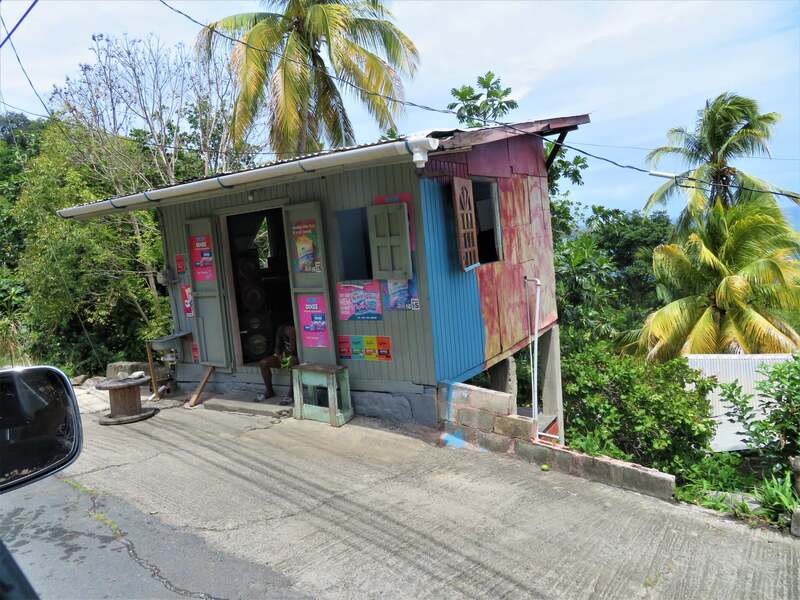
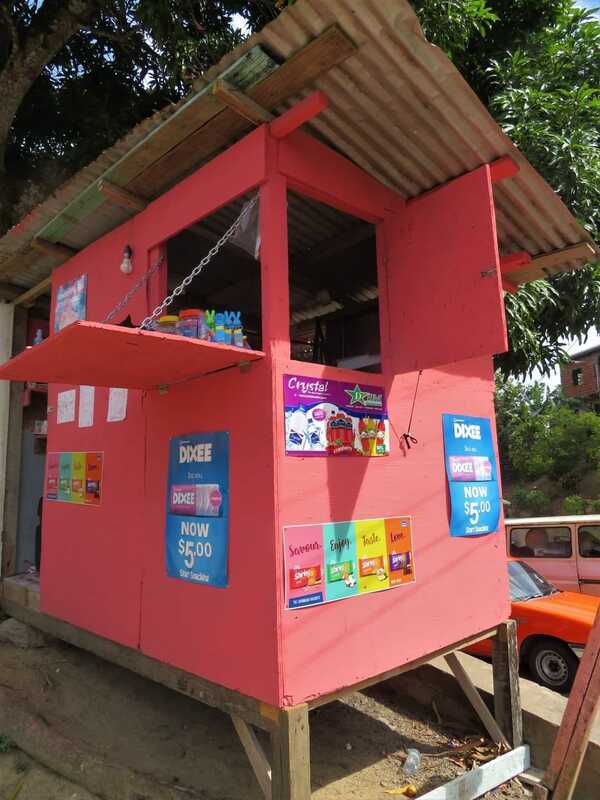
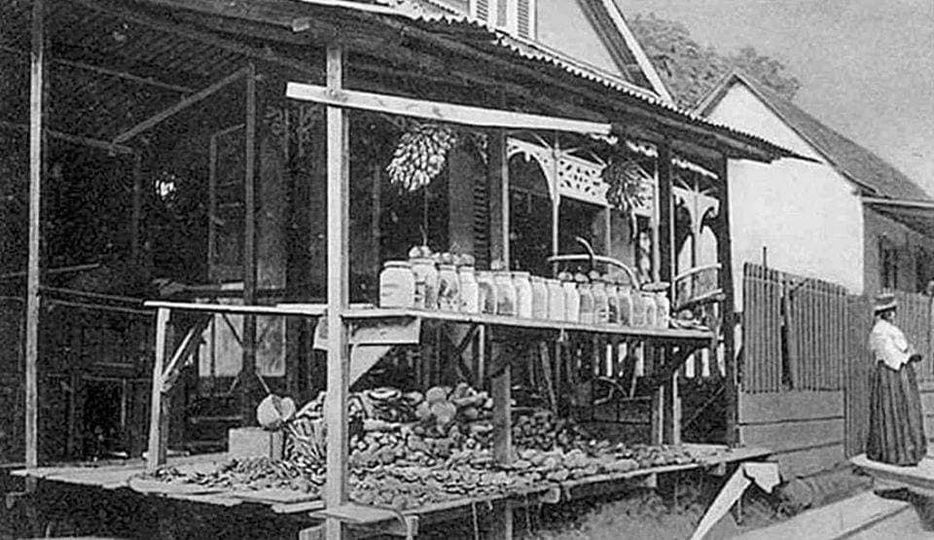
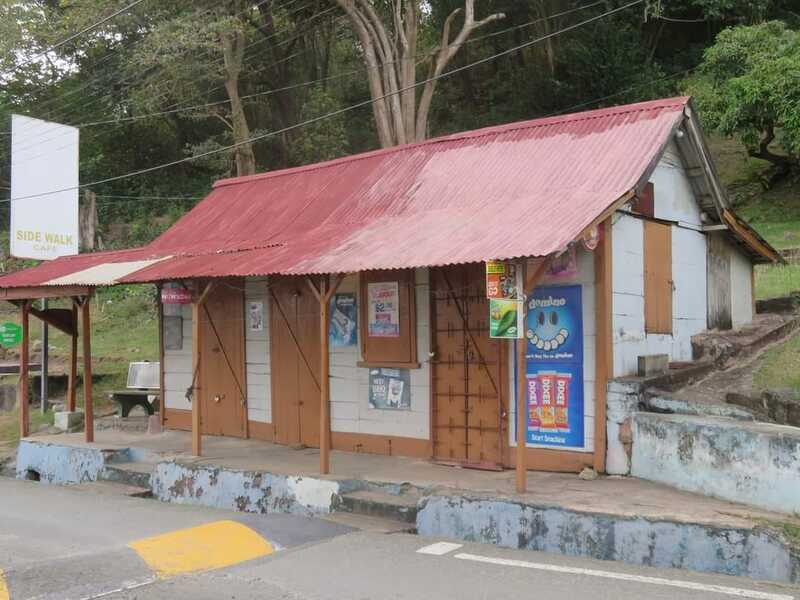
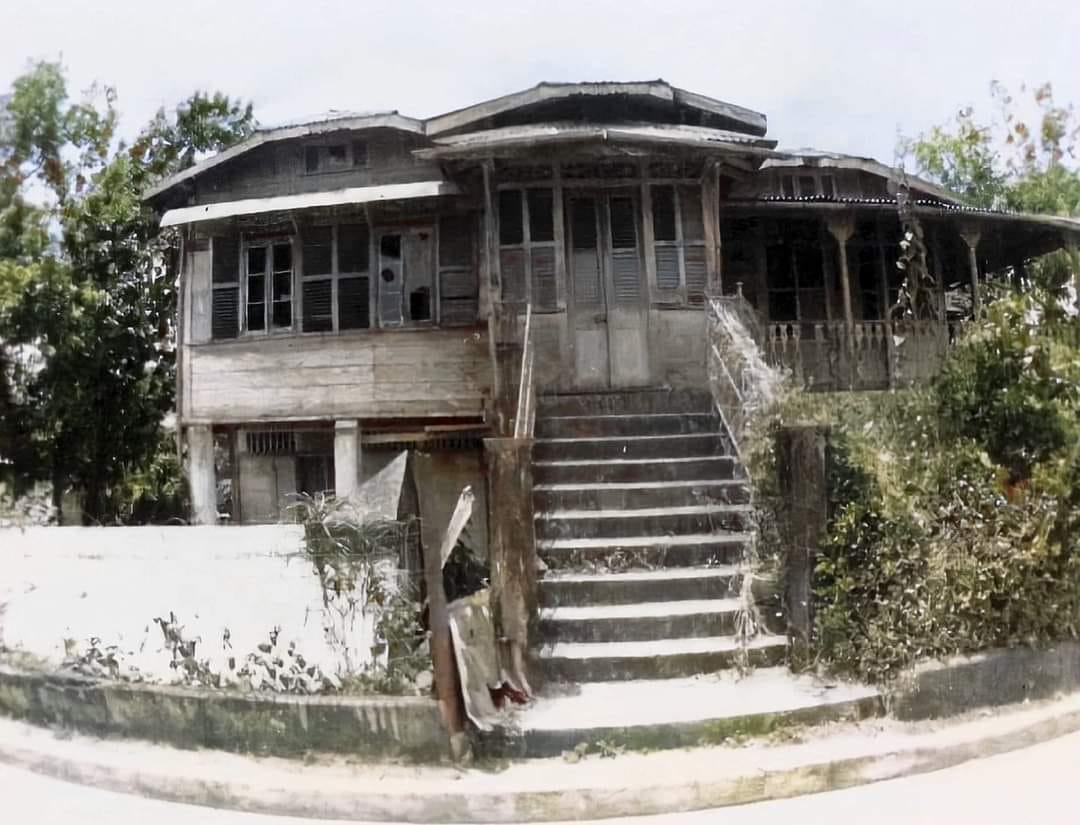
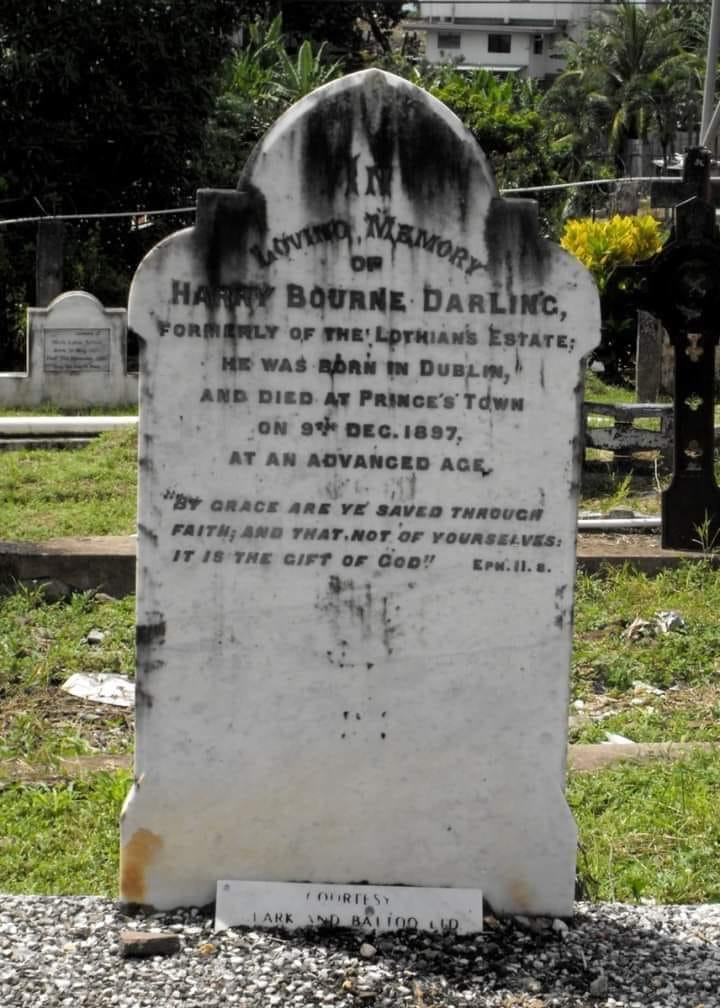

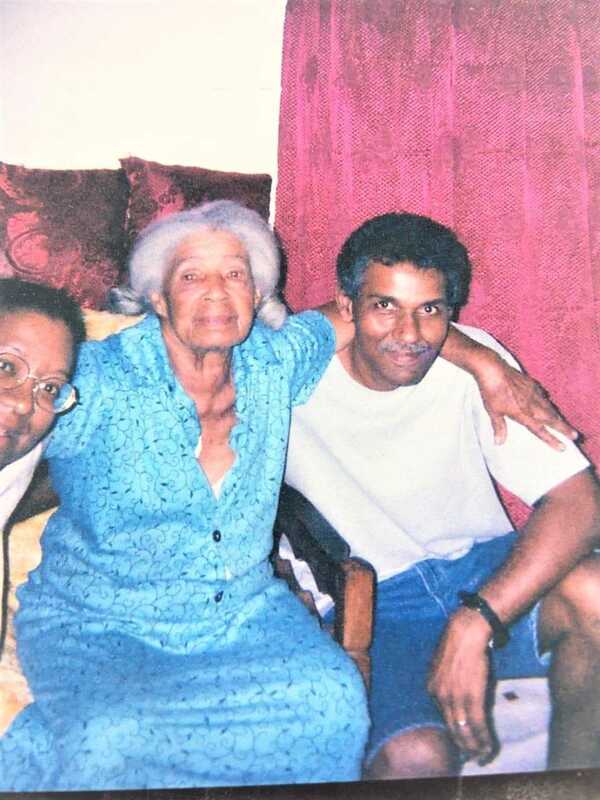
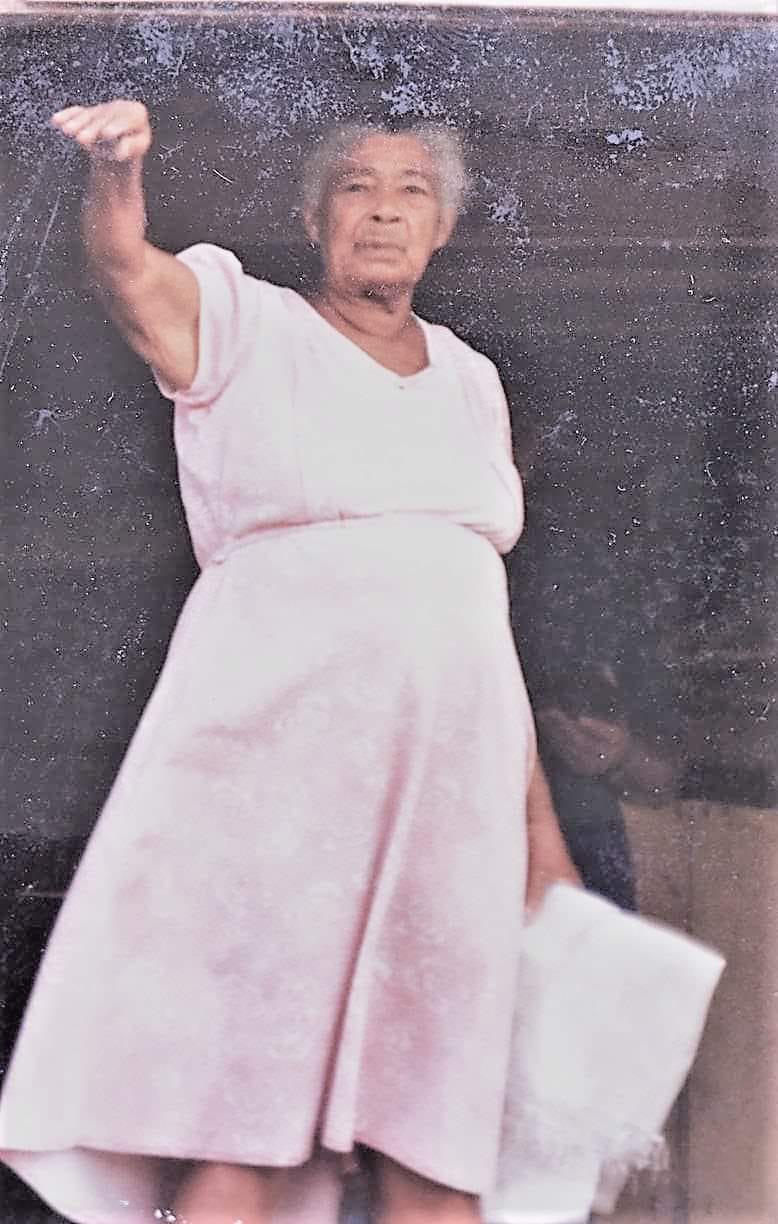
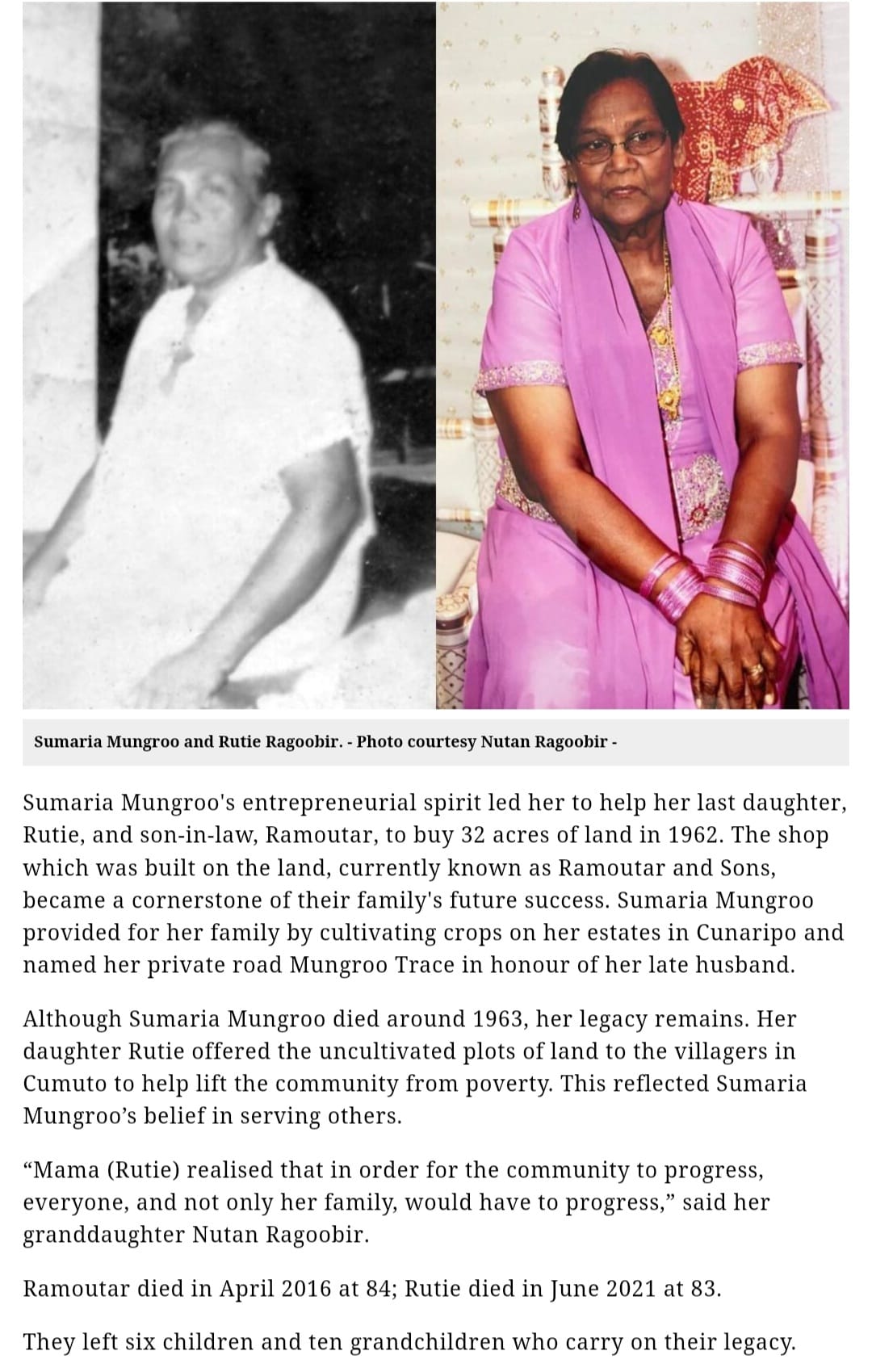
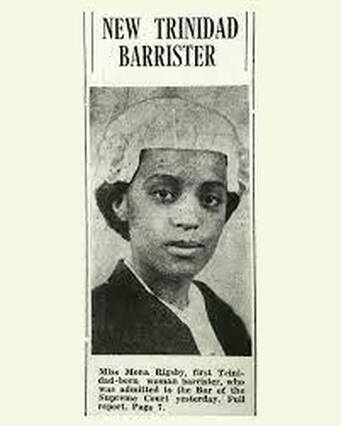




 RSS Feed
RSS Feed